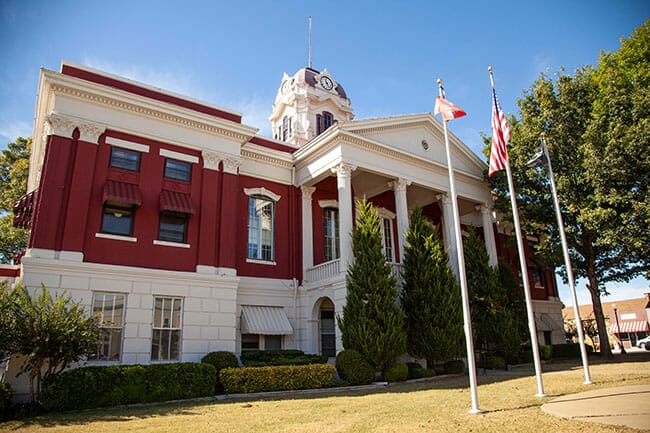

Uh oh...
It appears that you're using a severely outdated version of Safari on Windows. Many features won't work correctly, and functionality can't be guaranteed. Please try viewing this website in Edge, Mozilla, Chrome, or another modern browser. Sorry for any inconvenience this may have caused!
Read More about this safari issue.

When you think of Audubon Arkansas, what comes to mind? Birds, right? The name Audubon is synonymous with bird conservation. Arkansas has its own state chapter dedicated to protecting and restoring habitats important to birds and other wildlife.

I’ve been fascinated by birds since childhood. Today, one of my favorite hobbies is watching birds at my backyard feeders and in the wild. Since becoming an Arkansas Master Naturalist, I’ve become more interested in protecting birds. I do what I can to provide desired habitat for migrating birds as well as those that live in our area year round.
Audubon History
The roots of Audubon date back to 1886. George Bird Grinnell formed the national organization in memory of naturalist John James Audubon. Audubon famously documented birds across America and explored our state while traveling the Arkansas River in 1822.

In 1896, Harriet Hemenway and Minna B. Hall began hosting afternoon tea parties for Boston’s high society as a way to express disdain for a millinery trade that promoted bird plumage. These Boston tea parties (no pun intended) eventually grew into the Massachusetts Audubon Society. Since that time, the National Audubon Society has exploded into one of the largest non-profit conservation organizations in the country with nearly 500 local chapters nationwide with 23 state programs and 41 Audubon nature centers.
Audubon Arkansas, established in 2000 under the national umbrella, is dedicated to conserving and restoring natural ecosystems important to birds and other wildlife. The organization promotes citizen involvement, education for young people, public outreach, and education related to specific global initiatives such as climate change.
What’s a Natural Ecosystem?
To understand the mission of Audubon, let’s talk about natural ecosystems. The official definition is a naturally-occurring environment. In other words, the environment is not created by humans.
Globally, the National Audubon Society may be concerned with tropical rainforest ecosystems in Central Africa or tundra ecosystems in the Arctic. National ecosystems exist in the form of shrubland, desert, marsh, and reef. While Audubon Arkansas supports global and national efforts, its local habitats include prairie land, forest, wetlands, river bottoms, Ozark Karst, caves, and more.

Important Bird Areas
Did you know that Audubon Arkansas has identified thirty-three Important Bird Areas across the state? These IBAs encompass over 3.2 million acres of habitat essential to bird species during their annual breeding, migrating, and/or wintering cycles. Odds are good; there is probably an IBA near your home. Identified locales include bottomland hardwood forest, cypress-tupelo swamp, blackland prairie, pine woodland, and a fish hatchery.

Many places designated as Arkansas IBAs are expected, areas such as the Ozark National Forest (photo above). But other places are quite surprising and don’t come to mind when I think of bird conservation. For example, Fort Chaffee and the Stuttgart Municipal Airport have both been identified as IBAs in part because these habitats support vulnerable species, such as the Bell’s Vireo and Smith’s Longspurs.
Mississippi Flyway
It’s no wonder we have so many bird hotspots in Arkansas. Our entire state is located within the Mississippi Flyway, one of four essential routes used annually as migratory birds travel round-trip from breeding grounds in North America to wintering sites in the Gulf Coast area and Central and South America. The Mississippi Flyway covers an area 2,300 miles long with a watershed exceeding 1.5 million square miles. Because an estimated 325+ bird species use this flyway annually, a large number of birds migrate directly through Arkansas. Providing safe habitat is essential.
Remember the catastrophic British Petroleum Deepwater Horizon spill of 2010? The National Audubon Society was instrumental in establishing a Gulf-wide stewardship plan for coastal waterbirds. Audubon not only coordinated a massive volunteer and clean-up effort, but afterward, the organization helped craft and push through legislation that ensured penalties paid by British Petroleum were sent to damaged areas.
Yes, Arkansas is fortunate to have 9,700 miles of rivers and streams. But while we enjoy a state abundant in natural resources, it’s important to care for the health of our waterways. Wildlife, including birds, depend on our rivers and streams for their livelihood.
How to Begin Birding
Are you interested in becoming a bird-watching enthusiast?

This is one hobby that’s easy to dip your toe into. All you need is enthusiasm and a willingness to learn, a useful field guide (which you can check out from your local library), and a pair of binoculars. Starting out, there’s no need to spend big bucks on expensive binoculars. Any pair that will bring birds into closer view will work. Later, you may decide to upgrade. (For serious equipment, consult Audubon’s binocular guide HERE.)
Want to bird watch with friends? Consider joining one of the local Audubon societies in your area. In addition to the Arkansas Audubon Society, a state-wide group which meets twice a year in spring and fall for lectures and watches, the following groups are ready to welcome you as a member:
- Audubon Society of Central Arkansas
- Northwest Arkansas Audubon Society
- Tex-Ark Audubon Society
- Garland County Audubon Society
- Hot Springs Village Audubon Society
Get Involved
So what are other ways to get involved with birding?

eBird
As you become more involved with watching our feathered friends, help others by sharing your observation on the eBird website. Fair warning: you can lose lots of time exploring the eBird website, which is maintained by Cornell Lab of Ornithology. eBird allows you to explore bird hotspots throughout the world. For example, I spent some time studying Big Lake in Mississippi County (near my hometown) and discovered that 206 species had been reported. Lake Fayetteville in Washington County reflects 257 species.
October Big Day!
Mark your calendar for October 19, 2019. On this day across the globe, for 24 hours, tens of thousands of birders will be inputting their bird sightings into the eBird global database so that total species can be tallied for that specific day. What a fantastic activity for classrooms, families, scout troops, everyone, even if you only have a few minutes to spend staring out your kitchen window.
Last year the total was 6,331 species. Can we beat this number in 2019? Click HERE to find out how easy it is to participate.
How to Create a Bird-Friendly Backyard
One way to help with bird conservation is to create a bird-friendly backyard. Take a few of these steps and you’ll soon see a variety of birds on your property.

- Grow native plants. Native plants provide birds with nectar, seeds, berries and insects.
- Design your area with a natural bird habitat in mind. Birds need tall trees for canopy, shrubs and small trees, herbaceous plants, and a layer of decaying leaves, wood, and soil.
- Provide water in the form of a birdbath or fountain.
- Add a variety of bird feeders (away from squirrels and predators), including hummingbird feeders.
- Don’t dead-head flowers in the fall. Birds love seeds.
- Leave a brush pile on your property. A brush pile provides shelter, and twigs are used for nesting.
- Eliminate (or at least minimize) pesticides. To attract birds you must attract insects.
For More Information
To join Audubon Arkansas or learn more, click HERE.
To be a bird advocate, click HERE.
To subscribe to ARBIRD-L, an email forum for birding discussion, click HERE.
For Audubon Arkansas social events, click HERE.
To volunteer, donate, or simply stay abreast of Audubon Arkansas news, click HERE.

Arkansas Audubon provides not only an invaluable resource for birding enthusiasts but also a powerful voice for our Arkansas feathered friends. It’s true—birds need us today more than ever before. No matter your skill level or pocketbook size, there’s a way you can get involved and make a difference in Arkansas bird conservation.
We do the work.
You check your email.
Sign up for our weekly e-news.
Get stories sent straight to your inbox!










 Leave a Reply
Leave a Reply
[…] Sanctuary as a National Wildlife Habitat. Two years later, in 2013, the site was recognized by Audubon Arkansas, the state office of the National Audubon Society, as an Important Bird Area (IBA), the 32nd in the […]